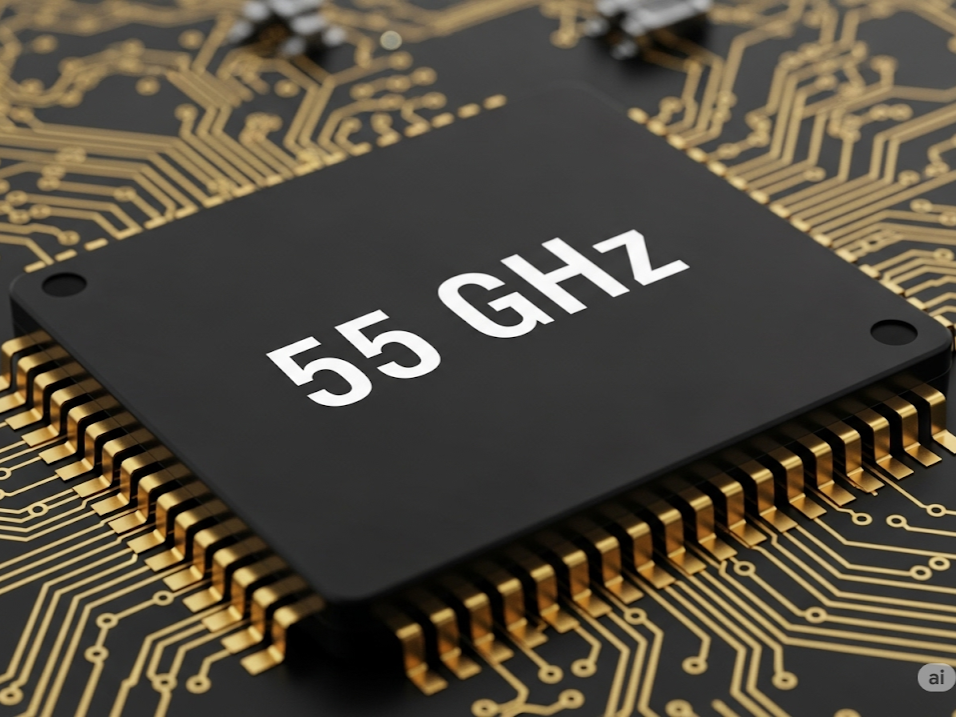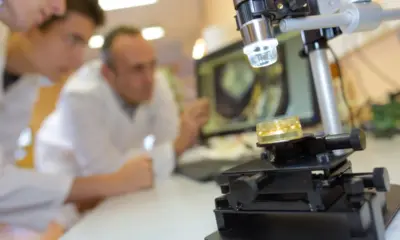Science
Breakthrough in Atomic-Thin Chips Revolutionizes Device Efficiency

Researchers at the University of California, Berkeley, have announced a significant advancement in chip technology that promises to transform the electronics industry. This breakthrough involves the development of atomic-thin chips that are not only faster but also thinner and more power-efficient than conventional chips. The findings were published in the journal Nature and could lead to a new generation of devices that enhance performance while reducing energy consumption.
The atomic-thin chips are fabricated using two-dimensional materials, specifically transition metal dichalcogenides, which are just a few atoms thick. This innovative design allows for a substantial reduction in the physical size of the chips without sacrificing performance. Researchers believe that this technology could pave the way for smaller smartphones, more efficient laptops, and advanced wearables that require less power.
Impact on Device Performance and Design
The implications of this advancement are significant. Current electronic devices often struggle with heat dissipation and energy efficiency, leading to performance limitations. The new atomic-thin chips address these issues by facilitating faster electron movements, which in turn enhances the overall speed of the devices. According to the research team, the chips could operate at speeds of up to 100 gigahertz, a notable increase over traditional silicon-based chips.
Moreover, the reduced thickness of these chips means they can be integrated into a wider variety of devices, including those that were previously thought incompatible with existing technology. As the demand for sleeker, more powerful gadgets continues to grow, this innovation offers a promising solution to meet consumer expectations.
Future Prospects and Industry Applications
The potential applications for atomic-thin chips extend beyond personal electronics. Industries ranging from automotive to healthcare could benefit from this technology. For instance, autonomous vehicles could utilize these chips to process data more efficiently, resulting in improved navigation and safety features. Similarly, medical devices that require rapid data processing could leverage this technology to enhance patient monitoring and diagnostics.
While the research indicates a promising future, commercial production and integration into consumer products may still take several years. The team at Berkeley is currently working on scaling up the production processes to ensure these chips can be manufactured at a viable cost. As the technology evolves, it is expected to attract interest from major electronics manufacturers looking to stay competitive in an increasingly fast-paced market.
In summary, the breakthrough in atomic-thin chip technology represents a pivotal moment for the electronics industry. With the potential for faster, thinner, and more energy-efficient devices, this development not only promises to enhance consumer electronics but also opens new avenues for innovation across various sectors. As researchers continue to refine and produce these chips, the future of technology appears brighter than ever.
-

 Technology4 months ago
Technology4 months agoDiscover the Top 10 Calorie Counting Apps of 2025
-

 Health2 months ago
Health2 months agoBella Hadid Shares Health Update After Treatment for Lyme Disease
-

 Health3 months ago
Health3 months agoErin Bates Shares Recovery Update Following Sepsis Complications
-

 Technology3 weeks ago
Technology3 weeks agoDiscover 2025’s Top GPUs for Exceptional 4K Gaming Performance
-

 Technology2 months ago
Technology2 months agoElectric Moto Influencer Surronster Arrested in Tijuana
-

 Technology4 months ago
Technology4 months agoDiscover How to Reverse Image Search Using ChatGPT Effortlessly
-

 Technology4 months ago
Technology4 months agoMeta Initiates $60B AI Data Center Expansion, Starting in Ohio
-

 Technology4 months ago
Technology4 months agoRecovering a Suspended TikTok Account: A Step-by-Step Guide
-

 Health4 months ago
Health4 months agoTested: Rab Firewall Mountain Jacket Survives Harsh Conditions
-

 Lifestyle4 months ago
Lifestyle4 months agoBelton Family Reunites After Daughter Survives Hill Country Floods
-

 Technology3 months ago
Technology3 months agoUncovering the Top Five Most Challenging Motorcycles to Ride
-

 Technology4 weeks ago
Technology4 weeks agoDiscover the Best Wireless Earbuds for Every Lifestyle





















